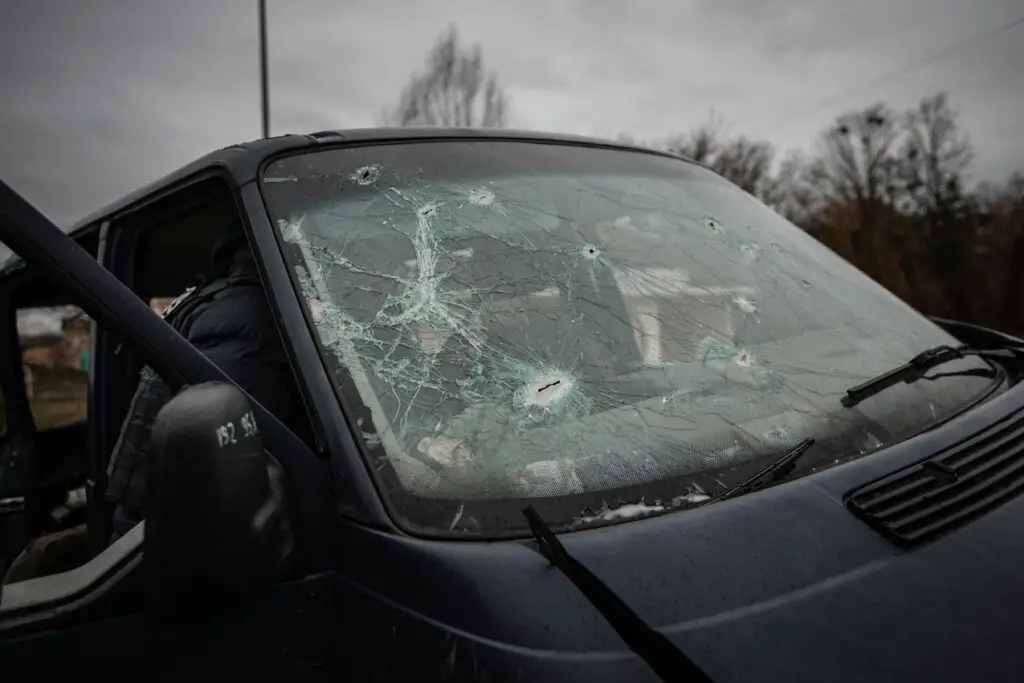Related Posts
What’s more fun than some good old-fashioned baseball? Baseball earns its title as America’s favorite pastime thanks to its tasty game-day snacks and exciting gameplay. With all the fun at baseball games, there is also a fair amount of danger. Batters hit 8-10 dozen balls in an average game. This leaves a lot of room for foul balls that travel fast! Watch as this baseball player hits a fantastic home run straight into a car. Read more to learn about the infamous “baseball rule” and its connection to the assumption of risk.
In the video, a man is in a well-lit baseball field, ready to hit a ball. His friend tosses the ball to him, and he swings. The ball flies far past the fences, heading straight for the nearby parking lot. Meanwhile, a car within the lot is moving almost perfectly to collide with the stray ball. The ball connects directly with the car’s windshield in a dismal scene. The batter and pitcher groan in awe, likely preparing to see if the driver is all right.
So, who would be liable in this situation? Are there any rules that govern liability around sports games? Let’s talk about it!
Assumption of Risk
As with many everyday legal incidents, there is a common law idea that can shed some light on this situation. In this specific case, the assumption of risk best describes who would likely be liable.
The assumption of risk is a common law concept in which someone accepts responsibility for damages in situations where they accept risk. The assumption of risk can be expressed or implied. Implied assumption of risk occurs when there is an unspoken or unwritten agreement that a situation may have risk. For instance, understanding that you may be at risk when playing or watching a physical sport. Express assumption of risk occurs when a party explicitly agrees to take on risk. This often takes the form of a contract or waiver.
According to attorney Ugo Lord, people playing or spectating games such as baseball assume liable risk. People understand that baseballs will be flying and can potentially hit people, buildings, and even cars. These people would be liable, considering their property or themselves take on damage during a regular game.
Ugo Lord also explains that courts have ruled that individuals driving on public roads who are not affiliated with the sport do not assume the risk involved. In the video, the batter sees the car in the lot he is aiming at. This, paired with his knowledge of how far he can hit, means he would likely be liable. This is especially true if the driver wasn’t aware of his presence in the first place.
The “Baseball Rule”

It’s not surprising that baseball is deeply rooted in American culture. This leads to a legal concept known as the “baseball rule.” This concept essentially defines the assumption of risk and the regulations for baseball hosts and spectators.
The baseball rule states that companies and stadiums have a limited duty of care to protect spectators from dangers at a typical game. For instance, stadiums must provide safe seating and netting around homerun-prone areas.
Generally, spectators at a baseball game understand that damages caused by random chance events such as a stray ball or accidents fall under the assumption of risk. In other words, they know they and their property are exposed to flying balls and other hazards. The only case in which the “baseball rule” would not cover these dangers is if the stadium had improper or outdated safety equipment.
Signage and Assumption of Risk
Companies and stadiums may supply waivers and warning signage to protect themselves even further from assuming liability. While these tactics do not guarantee limited liability, they bolster an assumption of risk argument in the event of an accident. Many visible signs can count as an explicit assumption of risk.
Baseball stadiums often display signs like “foul ball warning” or “park at your own risk near the baseball field.” While helpful, these signs are not necessary to establish the assumption of risk.


So if it’s the baseball player that is liable for the damages even when there is video of the car driver intentionally slowing down and breaking in the spot where the baseball went after he swung. Because he slowed down and then sped up to get to that spot I’m assuming so it would hit his car
[…] all cases, the hydrant’s owner is responsible for any property damage that the hydrant causes, including damage from misrepair and old […]